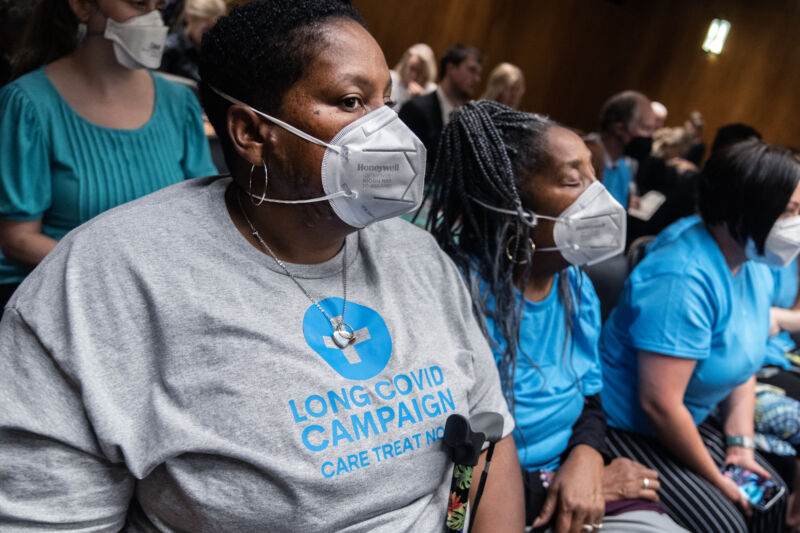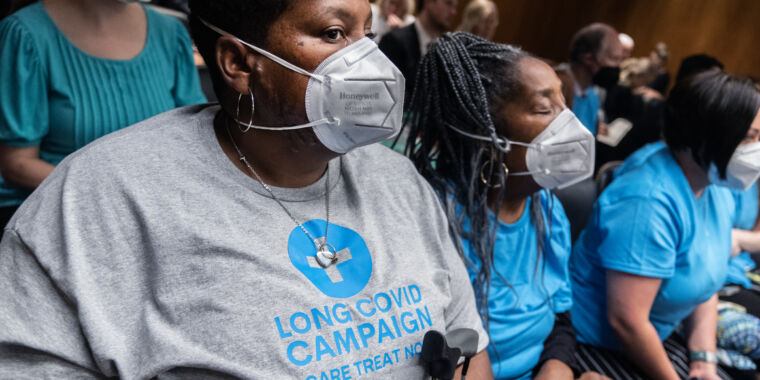
As the summer wave of COVID-19 infections rises again, a study published this week in the New England Journal of Medicine offers positive news for the pandemic disease: Rates of long-term COVID have fallen since the start of the health crisis, from a high of 10.4 percent before vaccines were available to a low of 3.5 percent for those vaccinated during the omicron era, the new analysis found.
The study, led by Ziyad Al-Aly, chief research officer at the VA Saint Louis Health Care System, used data from a trove of medical records from the Department of Veterans Affairs. Researchers ultimately included data from more than 440,000 veterans who contracted COVID-19 sometime between March 1, 2020, and Jan. 31, 2022, as well as more than 4.7 million uninfected veterans who served as controls.
Al-Aly and colleagues divided the population into eight groups. People who became infected during the study period were divided into five groups based on the dates of their first infection and their vaccination status. The first group included those who were infected in the pre-delta era before vaccines were available (March 1, 2020 to June 18, 2021). Then there were vaccinated and unvaccinated groups who were infected in the delta era (June 19, 2021 to December 18, 2021) and the omicron era (December 19, 2021 and January 31, 2022). The uninfected controls made up the last three of the eight groups, with the controls assigned to one of the three eras.
On the decline
In the pre-delta/pre-vaccination era, 10.42 out of 100 unvaccinated infected people developed lung COVID in the year after their infection, which the researchers called PASC, or postacute sequelae of severe acute respiratory syndrome coronavirus 2 (SARS-CoV-2) infection. In the delta era, the rate of lung COVID among the unvaccinated dropped slightly to 9.51 per 100. But for the vaccinated, the rate dropped much further, to 5.35 per 100. A similar pattern was seen in the omicron era. For the unvaccinated, the rate of lung COVID dropped slightly again to 7.76 per 100 people, while the rate among the vaccinated dropped to 3.5 per 100.
In a secondary statistical analysis, called a decomposition analysis, the researchers found that vaccines explained about 72 percent of the cumulative decline in long COVID rates across the eras, while era-related factors explained about 28 percent. Those era-related factors could include differences in the virus, improved treatments, and the use of antiviral medications.
Furthermore, the researchers looked at data on the disease categories associated with long COVID cases and also performed an analysis where they found a shift in symptoms across the eras. The researchers looked at 10 disease categories: cardiovascular, coagulation and hematologic, fatigue, gastrointestinal, renal, mental health, metabolic, musculoskeletal, neurologic, and pulmonary. Compared to the two previous eras, the researchers noted an increase in gastrointestinal, metabolic, and musculoskeletal diseases implicated in long COVID cases in the omicron era.
Overall, the study points to a welcome decline in rates of long COVID among those infected, particularly for those who have been vaccinated. But it also makes clear that long COVID is not a thing of the past: “a substantial residual risk of PASC remains among vaccinated individuals who had SARS-CoV-2 infection during the omicron era,” Al-Aly and his colleagues conclude.
The study also has some limitations, leaving questions for further study. One is whether the type or number of vaccines affects the risk of long COVID — that was not included in the study. The study also did not allow researchers to assess whether repeated infections increase the burden of long COVID.

